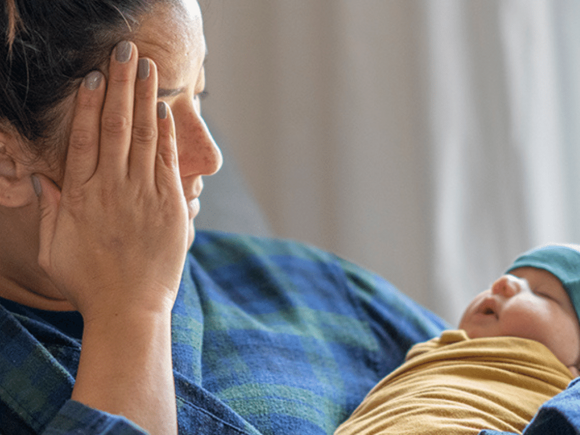Your baby’s head can quickly develop flattened areas from constant pressure to one part of the head. Your newborn’s skull is thin and flexible making it easy to mould. It can be common for newborns to have an unusual shaped head and this usually goes back to a normal shape about six weeks after birth. Sometimes a baby’s head may not return to a normal shape and may develop a flattened head shape. If you have any concerns about your baby’s head shape talk to your doctor or child health nurse.
Three reasons why a flattened head area may occur in your baby:
1. Laying in one position or looking in one direction repeatedly or for long periods of time
2. Sitting in a propped up position for long periods. This can happen if your baby suffers from painful symptoms associated with Gastro Oesophageal Reflux Disease (GORD)
3. Pain associated from abnormal neck muscle development or tight neck muscles. This pain can cause your baby to favour lying in a pain-free position. This reduction in head movement to both sides can create muscle weakness and the resistance to turn increases.
Below are eight important steps to facilitate balanced muscle development and reduce the risk of a flattened head area developing:
1. Alternate the head position when laying your baby down
2. Lay your baby at alternate ends of the cot at sleep time
3. Allow for several periods of tummy time at every wake time
4. Change the position of toys when your baby is on the floor to encourage head movement to different angles
5. Vary the way you hold and carry your baby
6. Change the side that you wear a baby carry sling on if your baby spends a lot of time in it
7. When picking up your baby, approach them from different sides of the body
8. Visit a baby accredited Osteopath, Chiropractor or Physiotherapist to assess spinal alignment if you had a long or difficult birth, forceps assisted birth or birth by caesarean section. A visit could also be beneficial if your baby does not feed well from a particular side, hates tummy time, is a poor sleeper or has wind discomfort. Seek professional help EARLY if your baby’s head is becoming flattened; it has a definite tilt to one side or favours facing a certain direction.



















